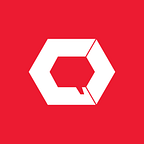Selective Laser Sintering (SLS) is a powder-based 3D printing technology wherein the parts are fabricated layer by layer. The setup consists of a laser, recoater, and a bed of powder material. The powder bed is heated to a temperature just below the melting point of the material and the entire setup is isolated from the ambient environment. The 3D CAD file is input to the SLS printer where the software slices the part geometry into subsequent layers with each layer height corresponding to the selected layer thickness setting. The laser scans the first layer, and as the name implies, selectively sinters i.e. partially melts the layer’s cross-section based on the input 3D CAD file data. The heated powder bed aids this sintering. Then the platform descends by one layer thickness value i.e. for 100µm layer thickness, the platform will descend by 100µm. The recoater then moves a new layer of powder in position. The laser again scans and sinters the next layer based on the “sliced” information. The platform descends again paving way for the recoater to deposit new layer of powder, and the process continues till the desired part geometry is fabricated completely. In SLS, the parts are fabricated bottom-up.
Since SLS is a powder based-technology, there is no support structure generation as the unsintered powder itself acts as support. Thus SLS technology is best suited for parts having highly complex and intricate geometries. It is one of the few technologies in 3D Printing in which moving part assemblies can be fabricated in one single go. SLS models can also be made hollow to reduce weight, and save material and cost in 3D Printing.
In SLS technology, multiple parts can be stacked together and fabricated in the same build as opposed to other 3D printing technologies, where only one part is fabricated at a time. In the absence of support structures, the parts can be oriented in whichever way suitable throughout the volume of the build. More efficient the stacking, more the number of parts that can be accommodated in a single build. This method of efficiently packing the parts together is termed as nesting. Owing to this quality, SLS is also used in the batch production of smaller parts. The maximum bounding box currently available with Chizel in SLS technology is 340 x 340 x 600 mm.
SLS comes with varying layer thickness setting viz. 60µm, 100µm, 180µm etc. The most widely used layer thickness setting is 100µm. Finer the layer thickness, better the surface quality, but more time is required to fabricate the parts and thus higher the cost, and vice-versa. Know more about 60µm and 100µm layer thickness.
Since SLS is a powder based technology, the parts are fabricated with an inherent grainy surface finish. The surface finish can be improved by post-processing (polishing). SLS parts are prime candidates for dyeing process, since the porous nature of the powder facilitates color absorption due to capillary effect. Therefore, if liquids are to be contained within the part geometry, there’s a chance that the outer walls of the part may become damp over a period of time. To avoid this, SLS can be post-processed with an epoxy-like coat to make the parts leak-proof. SLS parts can also be painted. But painting usually adds a layer thickness of about 100–200µm. Thus, we do not recommend painting on assembly-parts and functional-geometries, unless a suitable allowance is given in the design.
The most commonly used materials in SLS technology are polyamides viz. Nylon (Polyamide-12), Glass-Filled Nylon (Polyamide-12 with 30% Glass-Filled) and Alumide (Aluminium-filled Polyamide) etc., but Chizel currently offers only Nylon and Glass-Filled Nylon in SLS technology.
Owing to industrial grade machines and varied material characteristics in the offing, Selective Laser Sintering is one of the most widely used technologies in 3D Printing. It caters to applications ranging from Snap fit assemblies to high load bearing requirements.
Summary:
Materials: Nylon, Glass-Filled Nylon
Support Structures: No
Maximum Bounding size: 340 x 340 x 600 mm
Accuracy: (+/-) 200 microns
